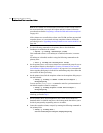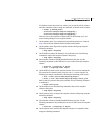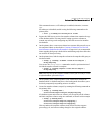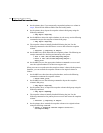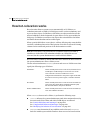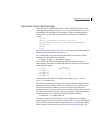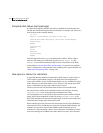
Chapter
12
Administering
hot-relocation
If a volume has a disk I/O failure (for example, the disk has an uncorrectable
error), Veritas Volume Manager (VxVM) can detach the plex involved in the
failure. I/O stops on that plex but continues on the remaining plexes of the
volume.
If a disk fails completely, VxVM can detach the disk from its disk group. All
plexes on the disk are disabled. If there are any unmirrored volumes on a disk
when it is detached, those volumes are also disabled.
Note: Apparent disk failure may not be due to a fault in the physical disk media
or the disk controller, but may instead be caused by a fault in an intermediate or
ancillary component such as a cable, host bus adapter, or power supply.
The hot-relocation feature in VxVM automatically detects disk failures, and
notifies the system administrator and other nominated users of the failures by
electronic mail. Hot-relocation also attempts to use spare disks and free disk
space to restore redundancy and to preserve access to mirrored and RAID-5
volumes. For more information, see the section, “How hot-relocation works” on
page 380.
If hot-relocation is disabled or you miss the electronic mail, you can use the
vxprint command or the graphical user interface to examine the status of the
disks. You may also see driver error messages on the console or in the system
messages file.
Failed disks must be removed and replaced manually as described in “Removing
and replacing disks” on page 112.
For more information about recovering volumes and their data after hardware
failure, see the Veritas Volume Manager Troubleshooting Guide.




